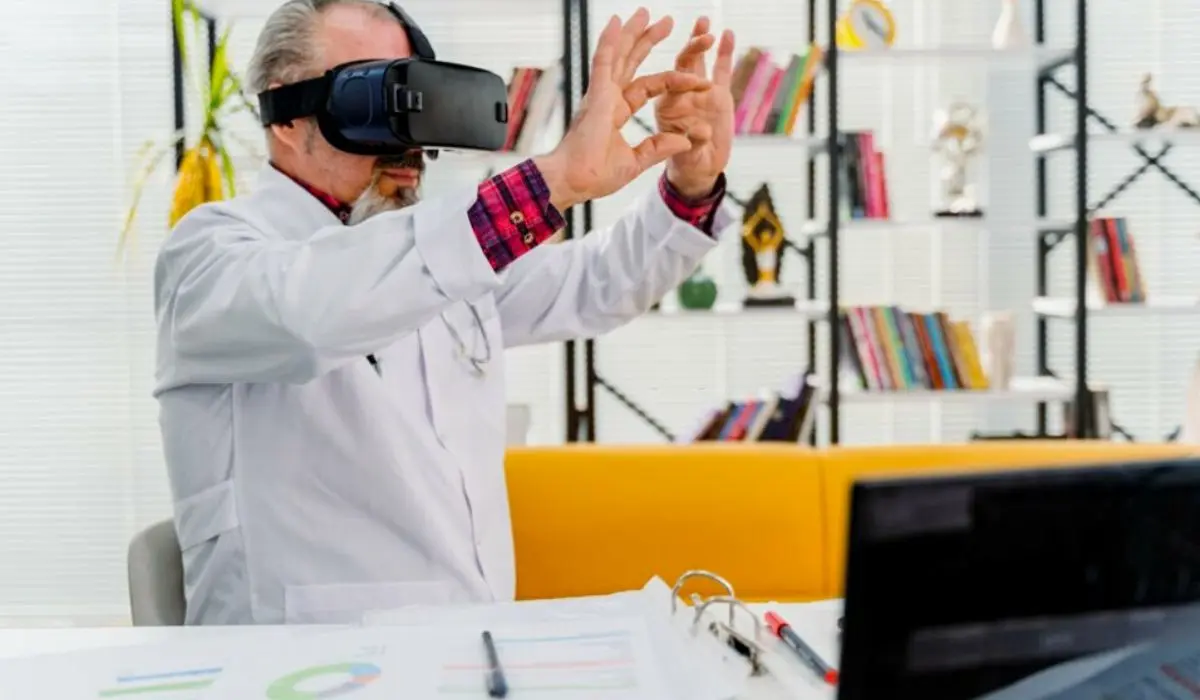Physiotherapy is taking a whole new dimension. New frontiers are opening up as to how individuals can manage pain and become better through virtual reality. Virtual reality has been proven to have the potential to become a regular and integral part of a sick person’s treatment plan.
VR, according to experts, have been used as a supplementary tool to reduce pain levels, especially during painful medical procedure or surgery.
Health experts have said with the intervention and use of VR, a patient’s innate perception of pain and his/her emotional response to pain and blood pressure, especially during open wound care, can be altered.
According to some scientists from Harvard University, VR has been shown to be the latest tool to help reduce chronic pain.
What Is Virtual Reality?
Simply put, it is a tool developed by a computer that alters reality. What makes it different from other computer-generated programmes?
VR is a three-dimensional environment you can see with special goggles and it has gained a lot of traction, especially with the opening of the tech era, where computers have been seen to do nearly everything and are replacing most human endeavours.
In virtual reality, there is a stimulated experience which employs pose tracking and 3D near-eye displays.
This gives the user a kind of feel of reality that is immersive of the real world, even though it is a world of forms of some sort which is virtual and only seen by the one with the goggles.

Virtual reality has been seen to be useful in education, business, and entertainment, and most recently, it has shown a huge potential to be used in medicine, especially anesthesia or pain medicine.
In VR, the users are permitted to carry out actions in a digital environment yet feel as though they are immersed in the physical one.
The main aim of VR, experts have identified, is to allow a person to experience and manipulate their environments to suit a world they have always imagined or want to be their own reality. It is deeply contrasted with alternate reality or augmented reality, where technology is integrated via digital information into the user’s real-world or environs.
How VR Works?
A VR environment is experienced through what is known as sensory stimuli which is mostly provided by a computer. The virtual host or visitor’s actions can influence what happens in the virtual one. So, if the host moves an arm, an arm would move in the world of forms or digital environment.
At the current stage of development, users have to interact with this type of artificial environment by wearing a VR headset and/or a haptic glove.
As time goes on, VR is expected to play a huge role in how patients understand and interpret pain.
Virtual Reality For Chronic Pain
For chronic pain reduction, VR is not planned to make the patient or user overly excited. It rather makes them calm.
It is a fact that virtual environments are calm and serene. Its setting has a natural feel to it, and with the touch of the blue skies or seas, the bright morning or the brilliant grassy fields nearby, a user suffering from chronic pain can become very calm.
The user would hear the sounds of the singing birds, and running water, and feel the touch of the gentle breeze passing by. Research has shown that the environments are not always computer-generated. Some rehabilitation experts have begun studying the use of video of real places.
The unique methods used for chronic pain reduction can include attentiveness and focus on the present moment. There are also elements of meditation, just like in Yoga, imagery although guided and a touch of psycho- or behavioral therapy.
Read More:- Breakthroughs In Tissue Regeneration For Athletes -Tissue Regeneration Methods
This is what many psychologists now refer to as a way of redirecting negative thoughts and pushing positive ones. These tools can also be used to control stress and mood. Strings of stress, anxiety, depression and fear all go away if properly done, and the pain the user used to feel begins to dissipate till it becomes non-existent.
Apart from managing chronic low back and neck pain, VR has been shown to give relief during labor, painful procedures, wound care, phantom limb pain, and in children’s PT.
Also, VR has shown the potential to reduce pain during the perioperative period in pediatrics and in breast cancer.
Conclusion
In summary, virtual reality is emerging as a powerful tool for pain management in physical therapy settings. By immersing patients in distracting, interactive 3D environments, VR can significantly reduce perceptions of pain during exercise and rehabilitation.
With its ability to lower pain levels without drugs, virtual reality can improve physical therapy outcomes, increase patient compliance, and reduce reliance on opioids. As VR technology advances, its pain-relieving applications are expected to transform the experience of physical therapy for the better.